Distribution of the chord of blade profiles and wings
The distribution of the profiles chords defining the geometry of our Propeller or wind turbine's blades Is an important determinant of performance of our wind turbine blade, Hydroelectric, boat propeller, propeller aircraft or fan ... In the dimensions tab, a series of sliders allows you to model the shape of your blade or wing in all its dimensions.
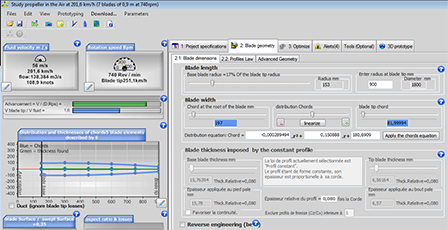

The distribution cords must respect a sufficient aspect ratio to avoid wasting energy. An helicopter blade has a significant aspect ratio, blade's tip losses are thus very small. The propeller or wind turbine's blades, will be the longest possible, to reduce losses, but in practice we are often limited in length, so the distribution of the lift must concentrated as far as the blade's tip. The shape making the most of this condition for the wing is the ellipse, but t we have already discussed this in the overview article about wings
- For a rotary wing, as the propeller blade, the speed received by the elements of the blade is composed of the rotational speed, and the speed of the fluid to the impeller. This implies that the perceived speed of an element at the blade tip is higher than the rate seen by an element close to the propeller shaft (apparent velocity).
The formula for the lift: Lift(2D)(in Newtons)= Cz X wing area(m²) X fluid density (Kg/m3) X ( speed²(m/sec)/2).The lift is directly related to the square of the speed seen by the profile . if we do not take into account losses at the wing tips, the lift changes with the square of the speed. Therefore equal distribution of chords on a rotating wing will focus the lift force on the fastest elements, so towards the blade's tip.
HELICIEL updates the distribution scheme of chords (and the lift distribution that follows) for each change of geometry. We see (below) a propeller blade' s lift and below, the same shape but for a wing. This clearly shows that the distribution of lift is centered on the end to the propeller (because the relative velocity is higher in the blade tip) whereas the wing lift distribution follows the distribution of chords (as the relative speed is constant);
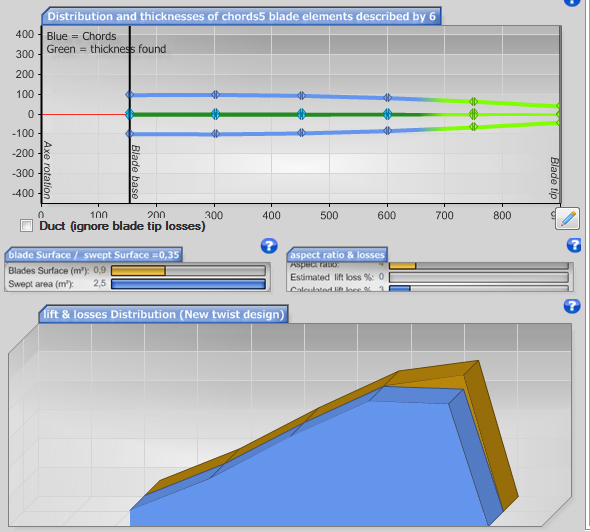
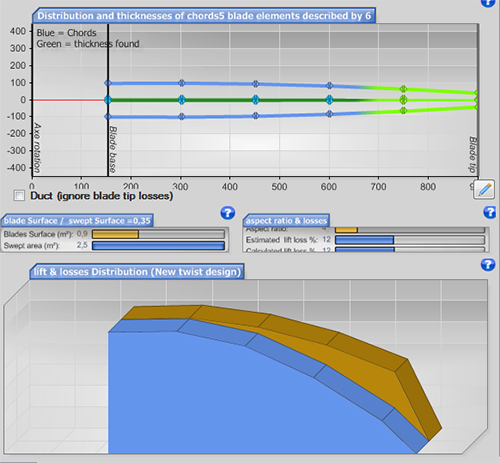
For wings , an elliptical distribution of chords gives elliptical distribution of the lift. But a propeller if it is desired that the lift is distributed elliptically we need to increase the strings of elements close to the propeller shaft to compensate the difference of relative speeds at the elements:
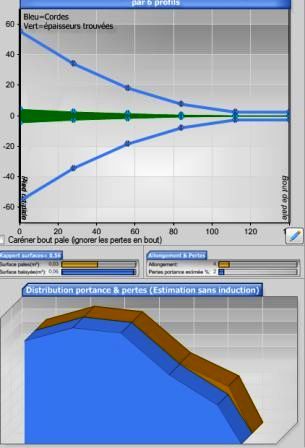
Comparing a commercial Wind turbine blades whose shapes are optimized to focus the lift farthest from the tip in order to reduce losses of the blade tip, and a wing shape optimized for the same effect:
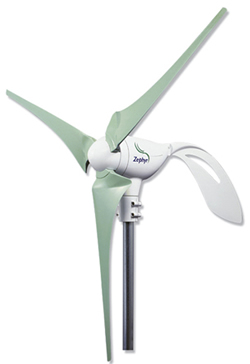
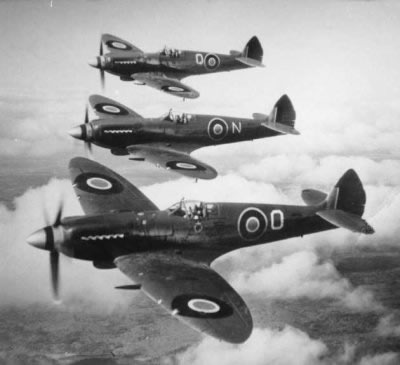
See also the propeller blades and wind turbines
This is a determinant factor of cavitation for propellers and hydrofoils in liquid environment .

 Global site map
Global site map Mecaflux
Mecaflux Tutorials Mecaflux Pro3D
Tutorials Mecaflux Pro3D Tutorials Heliciel
Tutorials Heliciel Mecaflux Store
Mecaflux Store Compare software functions
Compare software functions Quotes, Orders, Payment Methods
Quotes, Orders, Payment Methods project technical studies
project technical studies